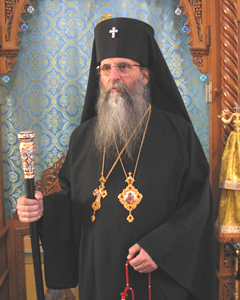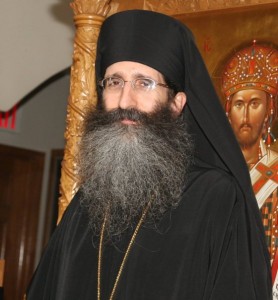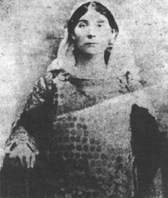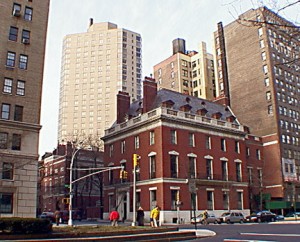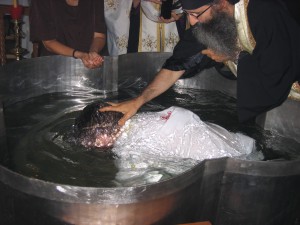[PDF]
Introduction
At the onset, I want to say that I have an extreme dislike for engaging in polemics. Nowadays, I normally do not engage in public refutations of false accusations; I spent too many hours of my life doing so in the 2000s, and it caused me a lot of consternation. Perhaps some good came out of it, but I found it impossible to answer every critic, and every argument. Nowadays, I don’t mind writing broadly in article or book format to address trends and events, but the point-by-point refutation style of responding so common online is something I do not have the stomach for anymore.
That being said, yet another person has contacted me and asked me about the accusations found on the website of the soi-disant Archbishop Gregory of Colorado pertaining to the GOC (referred to there as “GOC Kallinikos”).[1] I was preparing to respond in private, when I decided that if this individual has these questions, and others like him have had these questions in the past, then there are probably yet still more who wonder, but have not expressed their doubts. For this reason, I am going to write a public response, in point-by-point fashion. read more…
Those active in Orthodox Christian “corners” of Facebook have likely heard of or interacted with His Grace Bishop Christodoulos of Theoupolis, who joined the site as soon as it became open to the public in 2006 (in fact, I joined Facebook when he invited me). Bishop Christodoulos, a vicar bishop in the GOC, quickly reached the Facebook limit of 5000 friends, and while he primarily used it to interact with his spiritual children and promote videos on the YouTube Channel Greek Orthodox Christian Television, he also used it to become one of the most accessible Orthodox Christian bishops online, fielding questions about the Orthodox faith, and directing people to the nearest Orthodox Christian parish. read more…
I’m Sorry, but I Hate Fall
I’ve always hated Fall. Autumn. The changing of leaf colors. The cold breeze. The way the sunlight seems to cast down upon us differently. Longer hours of darkness. Wet rain. Back to school. Hardly anything interesting on the church calendar. The stupid “holiday” of Halloween. The death of my best friend Roberto (+11/19/2008). Sweaters, long pants. Unpredictable weather: mornings cold, afternoons hot. Animals going away. Heating bills increasing. Seemingly more tired.
Fall in 2012 was when I had to come to terms with the destruction of my first marriage. Fall of 2013 was when I had to deal with the stresses of a new relationship and a new baby, and the reactions of everyone who knew me. Seasonal affective disorder, maybe? Who knows. But I hate the Fall. read more…
The following is an excerpt from my upcoming book, Finding the True Orthodox Church. The book consists of a series of chapters which address various objections to True Orthodoxy. This is the introduction to a chapter which addresses the question, “Are True Orthodox Vagantes?” This charge is sometimes leveled against the True Orthodox, by comparing them to various pseudo-churches with no legitimate heritage, in an effort to paint the True Orthodox as pretend clergy and poseurs. The chapter will explore the differences between True Orthodox and Independent Orthodox (i.e. vagante) groups, to demonstrate that the two movements have nothing in common, despite the fact that some Independent Orthodox groups call themselves True Orthodox.
Introduction
Orthodox Christians living in the West have benefited from certain relative freedoms available to them which were not available in the Old World. However, with these new opportunities came new challenges. Especially after the confusion of the October Revolution in 1917, the Orthodox Church in the West became jurisdictionally fragmented, and in the midst of this disorder arose competing bishops and jurisdictions—a canonical irregularity and a serious scandal to all conscientious Christians. With no governmental authority to intervene, and given the chaos that was prevalent in many of the Old World patriarchates due to war and upheaval, the reality of an unhealthy situation was accepted as unavoidable. Out of this confusion arose bishops who were no longer affiliated with any established Orthodox synod or local church, and dozens of independent parishes. read more…
The Martyrdom of Saint Catherine Routis
+November 15/28 1927
Originally published by the Ta Patria Periodical
THE HOLY NEW MARTYR Catherine Routis was born in 1900 in a small Greek village called Mandra in Attica Greece to poor but pious parents.
Like her parents — John and Maria Peppas — Catherine was a pious child, offering to help family and neighbors in any way possible.
At the age of 22, Catherine Peppas married Constantine Routis from the same village. Christ gave them two children, Christos and Irene.
The devout Routis family joined the resistance of the True Orthodox Christians, participating in all the services and public demonstrations for their Faith, even when this was perilous — all for the sake of the traditions of the Holy Fathers.
On the eve of the feast of the Heavenly Powers, on November 7, 1927, some pious women from Mandra, together with the brave Catherine, had cleaned the church and prepared it, so that nothing was lacking for the awaited festival. read more…
Journey Into the Heart of ROCOR
Today I was talking to a historian friend on Facebook. He mentioned how he loves pouring over reams of historical data, something which bores other people to tears. I told him I share his passion. That sparked a memory of a most curious and interesting event that occurred during the writing of my thesis on Metropolitan Petros of Astoria: my journey into the heart of the Russian Orthodox Church Outside Russia (ROCOR).
While a seminarian at St. Vladimir’s Seminary in nearby Yonkers, New York, I became interested in the Greek Old Calendarists, much to the chagrin of some of my professors and fellow students (one fellow student, seeing an issue of Orthodox Tradition with my name on it in the mail room, dramatically exclaimed to me, “tell me this is not where your heart is!” while a professor walking by me in the library and seeing me reading the same remarked, “you don’t really believe that s*t, do you?!”) . After investing hundreds—if not thousands—of hours researching the Old Calendarists, I decided to do my thesis on Metropolitan Petros of Astoria, the first legitimate Greek Old Calendarist bishop in America, ordained by ROCOR bishops in 1962.
As part of my research for the thesis, I realized I would need access to the ROCOR Synodal Archives, where many documents pertaining to the ROCOR and its relations with the Greek Old Calendarists were kept. One of my fellow seminarians was a ROCOR monk who had recently returned from a monastery in Europe to continue his studies, and was given a blessing to attend St. Vladimir’s Seminary to do so. When not at the seminary, he resided at Holy Trinity Monastery in Jordanville, New York, where Metropolitan Laurus (+2008) lived as well. He spoke with the Metropolitan, who granted me permission to do research in the archives, located at the ROCOR Synodal headquarters.
ROCOR’s international headquarters, often colloquially referred to as simply “Synod,” is located at 75 E 93rd Street in New York City. This building is part of The George F. Baker Houses, an iconic family compound of houses right off of Park Avenue in Manhattan, and was acquired by the ROCOR Synod of Bishops in 1958. It houses the Cathedral of Our Lady of the Sign (which was formerly the mansion’s grand ballroom), administrative offices, a kitchen, an apartment for the resident bishop (at that time, Bishop Gabriel lived there), and many individual rooms, some of which are inhabited by people who work at Synod, such as the tireless musician, translator, and composer Isaac Lambertsen.
On the appointed day, I arrived at Synod to meet my monastic friend. An older gentleman manned the door, dressed in a suit and tie, reading a Russian newspaper, and occasionally answering the phone. The lobby was immaculately clean, although the lighting was dim—what would become a recurring theme. I announced who I was, and he phoned my friend, who promptly came downstairs and greeted me. He then proceeded to give me the tour.
Synod was sort of like something similar to Walt Disney World’s Haunted Mansion. It’s a huge building, half empty, with numerous winding hallways and staircases. But as one transects the numerous floors, instead of encountering ghosts doing various tasks as in Disney World, one instead would find various individuals quietly going about their business. Some were working, while others were sitting around conversing in low voices. If this were a Greek Orthodox operation, the noise level would be five times higher, and the various hangers-around would be more welcoming and animated, but as Synod is a fully Russian institution, the result was a rather low key experience where one had the distinct impression that people were at best indifferent and perhaps even mildly hostile to the presence of strangers.
In the kitchen, older women cooked, which is something that happens in all Orthodox institutions where there are kitchens. I recall being offered soup or something likewise hearty. My friend and handler then took me to a small door with a small pane of glass. Opening it, there was a bricked in wall. Visions of someone being bricked in as a medieval punishment came to mind, but a far more tame explanation was offered: the original owners were so rich, that they had their own subway stop for the workers to use daily, but as New York modernized and reorganized its subway system, such perks for the rich were gradually phased out, and the stop was bricked in. Adventurers would love to go into those abandoned tunnels, I’m sure.
Going to one of the upper levels, we sought out Isaac Lambertsen’s room to greet him. Isaac and I had communicated a few times by email, and have a mutual friend in common. As I recall, the hallways were not straight, but rather formed something akin to an L-curve or perhaps a V-curve. The hallways were again dimly lit, and I admit that were I living there, I would be afraid to walk those halls at night, for fear of whatever person might have made it past the old man guarding the door and then laying in wait in one of the many empty rooms! Well, now I am being dramatic—I am sure they have a security system Nevertheless, there is something romantic about walking around narrow, dark, dimly-lit hallways in a mansion in Manhattan off Park Avenue, and it’s a memory that will stay with me forever.
Finally, we arrived at the archives. At the time, Fr. Seraphim Gan was the archivist, and after the appropriate introductions, I was allowed access to the eight boxes on Old Calendarists. Boxes 1-7 were chronologically-organized, while box 8 was solely focused on one individual who has been in the center of some controversies in the history of the Old Calendarists. About half the material in that box was supportive, and the other half not-so-much.
Beyond the Old Calendarist materials, there was a filing cabinet labelled in Russian, “Their Graces in Schism,” which was locked. I was told it pertained to those bishops whom ROCOR considered to be schismatic at the time, such as Metropolitan Valentine of ROAC. Also, there were filing cabinets with archives from Synodal meetings. All of the earlier material was solely in Russian. My friend pulled out one document from the 1950s, where Bishop John (Maximovitch)—now St. John—voiced support for the Old Calendarists and ordaining bishops for them, but when I asked if I could copy said document, I recall being told it was, “outside the purview of my blessing” or something to that effect. Indeed.
We Americans do not have old castles or palaces. What we do have are old estates. Mt. Vernon, Monticello, and the like are all famous places where one can go and see a glimpse of life from a different age. ROCOR’s headquarters is also an estate; an urban estate and an oasis in the midst of the great hustle and bustle that is New York City. It clearly was in decline at the time I visited in 2005, but the people there had dignity nonetheless, and carried on their duties faithfully. I had mixed emotions about my visit: respect seeing a venerable religious institution; admiration of a work of American architecture; dismay at seeing the decline of what was probably once a vibrant community of co-laborers for the Gospel living in community; and a profound sadness that ROCOR would soon be reuniting with the Moscow Patriarchate, despite the serious reservations of many (for those who did not follow this course, see here). I was also grateful that I was able to see something that most people would never be able to see. Being a historian—even an amateur one—is something that opens up doors and contextualizes life.
I was able to copy several hundred pages of documents from the ROCOR archives, which formed the nucleus for my work on Metropolitan Petros. In the process, I had a lot of fun exploring this intriguing and mysterious place, as well.
Are You a Convert? Tell Your Story!
Are you a convert to the GOC under Archbishop Kallinikos, our sister Russian Church (the ROCOR under Met. Agafangel), or our sister Romanian Church? Would you be willing to share you conversion story? If so, please contact me at anastasios At anastasios.hudson DOT com.
I will be editing a collection of conversion stories and would love to have your contribution. You can help others sort through the issues and make the decision to join our Church!
In Christ,
Anastasios
Part of my ongoing Correspondence series, featuring replies to people who contacted me and asked questions.
Dear in Christ A.,
Since the last time we talked I have looked into some other “true” churches and have been absolutely appalled at much of their beliefs. However, this is still not the case for your church. Who from what I see is teaching the same Orthodoxy of the Holy Fathers.
I’d be curious to know which other “true” Churches you have investigated and which teachings of theirs you find appalling. It seems to me that many in this day and age imitate the Greek Old Calendar Church. In other cases, there were former members of our Church that left us and went down an unsober path.
I still have a few more questions to ask, if you don’t mind, brother?
I was baptized and chrismated in the Greek Orthodox Church under the EP. I have been and continue to attend an OCA church where I will be tonsured a reader soon. If I were to visit one of your churches would I be considered a heretic? Or would be I be considered Orthodox but lost in a sea of modernist heretics? What is the view from your church’s perspective?
We do not make it our general business to prejudge people. If you were to visit our Church, you would be treated as an Orthodox Christian. If, after the fact, you espoused modernistic or ecumenistic viewpoints, we would have to reassess our opinion, but from our previous discussions, I highly doubt that is the case Now, we have a different view when it comes to certain hierarchs and priests in your Church that officially teach Ecumenism and branch theorism; this scandalizes us and we must state that those bishops who are praying vested with Roman Catholics such as Patriarch Teoctist in 1999 are acting in a heretical way.
That raises the problem of how we could presume someone like you to be personally Orthodox when you may in fact be under an Ecumenist bishop. Based on our conversations, I believe that you personally have an Orthodox confession of faith. If you realize that your bishop is heretical, and yet you continue to commune with him, you will, however, take his heresy onto yourself.[1] For this reason we do not espouse resistance from within the New Calendarist Ecumenist Church, as we previously discussed when talking about Fr. Justin Popovich. Canon 15 of the 1st-2nd Council states that we are to separate from heretical bishops. Of course, some are of the opinion that Ecumenism is a mistake, but not a heresy, and therefore believe it is wrong to separate. We wish such individuals well and pray that their approach will bear fruit, for ultimately the goal of both approaches is to confront false teaching and restore communion between us. We don’t believe that that approach will ultimately bear fruit, nor is it the method found in the Fathers. We believe that our approach is the correct one, so we would ask you to prayerfully consider breaking communion with your present bishop and come under a right-believing bishop.
I have heard words like Matthewites? These words have nothing to do with your church, the Genuine Church of Greece, right?
Have you studied revolutionary theory? I hesitate to compare the Holy Church of Christ to a movement, but as you may be aware, in a revolution inevitably the idealogues become dissatisfied with the new order once they have “won” and are often marginalized by the centrists. In a similar fashion, after the three Metropolitans of the State Church of Greece returned to the Old Calendar in 1935, and consecrated four bishops to assist them, one of these bishops, Matthew, became angry that the Synod began to take a softer approach to governing after many years of polemical rhetoric (I am not suggesting the rhetoric was wrong, but merely that it was considered overly polemical to some). One of the Metropolitans, Chrysostomos of Florina, concluded that the best solution would be to encourage the State Church to return to the Old Calendar and renounce Ecumenism, instead of battling it in the open so to speak. Bishop Matthew believed this conciliatory approach of our Synod was a caving in to the New Calendarists and split, forming his own Church and consecrating his own bishops. We cannot accept such a questionable practice. Since then, the Matthewites have become increasingly isolated to the point that they believe they are the last remaining Orthodox on Earth. We heartily disagree.
On a personal note. I find it interesting how a convert like yourself ended up in this jurisdiction. If you don’t mind telling me how it unfolded for you, I would love to hear it?
I had always been aware of Old Calendarists since I discovered Orthodoxy, via reading the website OrthodoxInfo.com, which used to have many Old Calendarist articles on it. I went to St Vladimir’s Seminary as a Catholic to learn about Orthodoxy more, and in the course of studying there and taking some classes that were supportive of Ecumenism, I came to the conclusion that Ecumenism hinders evangelism of non-Orthodox. I also believe that the practice of receiving converts by chrismation alone cheats them out of a great grace. There are of course other issues, but these were two big issues. I began to research Old Calendarists more and decided to do my thesis on the first Old Calendarist bishop in America, Metropolitan Petros of Astoria. I began to go to St Markella’s Cathedral in New York, which was 20 minutes from where I lived at St Vladimir’s. After graduating and moving back to North Carolina, my wife decided to finally join me in Orthodoxy, and so we were baptized in St Markella’s.
I hope this answers your questions and I hope I have not offended you. Please let me know if you have any more questions. I am always glad to answer them. Also, please tell me a bit about your journey to Orthodoxy.
In Christ,
Anastasios
[1] Please see the article Why The True Orthodox Are Truly Orthodox for a thorough analysis of this point.
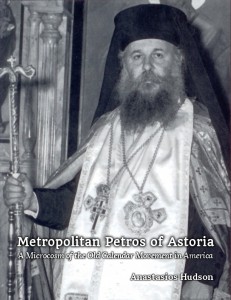 Thanks be to God, I have finally published my book, Metropolitan Petros of Astoria: A Microcosm of the Old Calendar Movement in America. This book, which was originally my Master’s thesis at St. Vladimir’s Seminary (2005), has been edited and corrected, and formatted for publication.
Thanks be to God, I have finally published my book, Metropolitan Petros of Astoria: A Microcosm of the Old Calendar Movement in America. This book, which was originally my Master’s thesis at St. Vladimir’s Seminary (2005), has been edited and corrected, and formatted for publication.
At present, the book is available in print-on-demand and ebook formats from the following locations:
Print: CreateSpace and Amazon.com
Ebook: Amazon Kindle, Lulu, Kobo, Nook, iBookstore
From the back cover of the print edition:
“Metropolitan Petros of Astoria was born Stephanos Astyfides on September 1, 1915, on the island of Chios, Greece, to Maria and Dimitris Astyfides. From an early age, it is reported that both he and his brother Nikolaos (later Fr. Niphon) were inclined towards monasticism. At the age of 18, Stephanos set off with Nikolaos to Mount Athos, where they resided at the Skete of Saint Anna in the Cell of the Holy Ascension. They were ordained as deacons and priests by Bishop Germanos of the Cyclades in order to serve parishes in Thessalonica, Chios, and Athens that adhered to the Julian Calendar. The precise date of Father Petros’s ordination to the priesthood was August 9, 1944. At this time, there were no bishops and very few priests affiliated with the Greek Old Calendarist Church, and as a result hieromonks from Mount Athos performed the task of serving for those faithful who refused to accept the New Calendar” (Chapter 2).
Tucked away on a quiet street in Astoria, New York is the Cathedral of Saint Markella, founded in 1954 by Metropolitan Petros of Astoria (1915-1997), the first resident Old Calendarist Greek Orthodox bishop in America. This work examines his ecclesiastical life, from his origins in Greece through his arrival in America and establishment of the Cathedral, his ordination to the episcopacy by bishops of the Russian Orthodox Church Outside Russia, his relationship to the Holy Synod of the Church of the Genuine Orthodox Christians of Greece, and his later years. The controversial issue of his views on the issue of Grace in the Mysteries (Sacraments) of the New Calendarists is discussed frankly and analyzed. His life and work is framed in the context of the Old Calendar movement as a whole, and his life is revealed to be a microcosm of it.
What emerges is a portrait of a zealous pastor dedicated to the salvation of the souls under his care, who reached out to the Greek Diaspora of New York and beyond with a concern for preserving and restoring ecclesiastical Tradition, who cultivated deep relations with Russian Orthodox Christians at a time when Orthodox in America appeared to be hopelessly fractured along ethnic lines, and who maintained a principled approach to theological matters, despite suffering great personal costs.
Also, see the excerpt from the Preface.
Please purchase your copy today, and help support me in my writing career! Your support will enable me to continue writing additional works such as this in the future!
My book, Metropolitan Petros: A Microcosm of the Old Calendar Church in America will be released as an ebook and in print-on-demand format this week, God-willing. I am putting together the final edits and formatting to meet the various publishers’ requirements. In the meantime, here is an excerpt of the work, the Preface to the Published Edition. Please stay tuned, and plan to purchase your copy, which will help raise awareness of this monumental figure, and help support my writing career and family!
Preface to the Published Edition
 The first time that I visited the Cathedral of Saint Markella was during Lent of 2004, after I dropped someone off at nearby La Guardia airport. On my way back, on a whim, I decided to stop in, after having read about this Church and its people—the Greek Old Calendarist Orthodox Christians—for several years. Tucked away on a sleepy Astoria street sits this modest-sized cathedral, which was founded in 1954 by Metropolitan Petros of blessed memory, who came to America after suffering through the persecutions directed against the Old Calendarists in Greece from 1924 on, after they had refused to go along with the change in the Orthodox festal calendar introduced that year.
The first time that I visited the Cathedral of Saint Markella was during Lent of 2004, after I dropped someone off at nearby La Guardia airport. On my way back, on a whim, I decided to stop in, after having read about this Church and its people—the Greek Old Calendarist Orthodox Christians—for several years. Tucked away on a sleepy Astoria street sits this modest-sized cathedral, which was founded in 1954 by Metropolitan Petros of blessed memory, who came to America after suffering through the persecutions directed against the Old Calendarists in Greece from 1924 on, after they had refused to go along with the change in the Orthodox festal calendar introduced that year.
I was a seminarian at St. Vladimir’s Orthodox Theological Seminary in nearby Yonkers, New York, having arrived there in the summer of 2002. I was not Orthodox at the time, but rather an Eastern-Rite Catholic, and part of the reason I had enrolled in the seminary was to learn as much as I could about the Orthodox Church, in order to discern whether to remain Catholic or become Orthodox. It was not long before I decided to become Orthodox, but I noticed differences between the modern presentation of Orthodoxy and what was being described in the ancient texts we were studying. I also grew concerned with how Orthodox participation in the Ecumenical Movement might be negatively impacting the missionary activity of the Orthodox Church.
I was always aware of and appreciated the small but vocal traditionalist element in the Orthodox Church, which I had become familiar with as early on as I had discovered Orthodox Christianity itself, but I doubted whether the issues I was having were serious enough to lead me to join an Old Calendarist Church, or whether I should just join one of the “mainstream” jurisdictions in America and be an advocate for traditionalism “from within,” as many were encouraging me to do. This is what I was wrestling with that April evening ten years ago when I decided to pay a visit to St. Markella’s.
Stepping into the cathedral, I was struck with a peaceful feeling. The hymn “God is with us” from Great Compline was being chanted by a monk and a nun alternatively while a priest served, and there were a few people in attendance, but not a crowd. Still, the fact that there was a church that was open all day every day where people could just stop in and pray, with services that had been going on daily since 1954, made a strong impact on me. I left at the conclusion of the service, without having spoken to anyone, but feeling convicted of a need to take these people and their claims seriously.
A few months later, I returned to the cathedral to speak first with Bishop Christodoulos and later with Metropolitan Pavlos, the grandnephew of Metropolitan Petros; and after an afternoon spent with them, I felt called to join the Church of the Genuine Orthodox Christians, but I took the process slowly. I was still enrolled in the Seminary, and didn’t want to cause any unnecessary conflict. There were also personal and family concerns. In August 2006, a year after I graduated, I was baptized at the cathedral by Bishop Christodoulos with the assistance of Fr. Theodore Giannakopoulos.
While in seminary, we were required to write a thesis for our Master’s program, and with all the research I had invested in the Old Calendarist Orthodox Christians, I decided to write my thesis on Metropolitan Petros and his work to establish and support the Old Calendar church in America. I enjoyed researching and writing the thesis greatly, and was given access to important documents that many had never had the chance to see. The present work was originally submitted as a thesis to the faculty of St. Vladimir’s Seminary on April 20, 2005, and has now been revised for publication.
I would like to thank all those who have supported me over the years and I pray that my publication of this work on the life of Metropolitan Petros will help to further raise awareness of the Church of the Genuine Orthodox Christians of America.
Anastasios Hudson
July 3, 2014 (o.s.)
Martyr Hyacinth of Caesarea in Cappadocia
